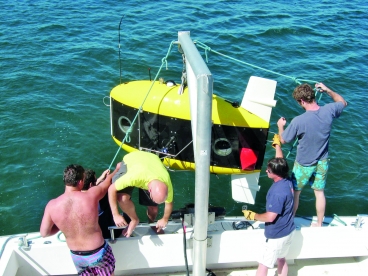Researchers from MIT have formulated a set of complex mathematical techniques for enabling an autonomous underwater vehicle to independently move underwater without the intervention of the operator.
 AUV
AUV
These mathematical techniques are able to steer the AUV, even through large areas without getting lost. John J. Leonard, a professor at MIT explained that underwater navigation of the AUV is complicated as radio waves cannot propagate, the GPS fails to function and even optical methods will not work underwater. Viewing via a computer is also not very clear and the visibility is made difficult by the turbidity of the water.
The researchers at MIT have finally zeroed down on using sound waves for establishing acoustic communication underwater for guiding AUVs. Leonard tries to explain the working of the acoustic waves thus the seabed is covered with debris, which will cause bouncing of the waves and so the operators will have to send the AUV back and forth to record images of what it views underwater. During its journey, the AUV keeps track of its speed and the direction of motion. But by simply keeping track of speed and direction the AUV will not always be able to follow the right path. Leonard and his team have supported this method of direction tracking with a mathematical technique called simultaneous localization and mapping (SLAM), where the AUV builds a map based on the information it records. The AUV needs to keep track of all the objects it observes in its path and be able to relate to a similar object when spotted at a different location. The SLAM technique now adds the newly observed object to the map and optimises the layout of the map until it becomes accurate. With the SLAM technique, the AUV adopts a looping closing constraint technique when it sees the same object repeatedly when surveying a large area. Leonard however associates a small element of error with the SLAM technique as well due to the ambiguity of the sensor data. He added that in challenging underwater missions, a series of AUVs that communicate with each other can be employed to get the best results.